SECTION THREE
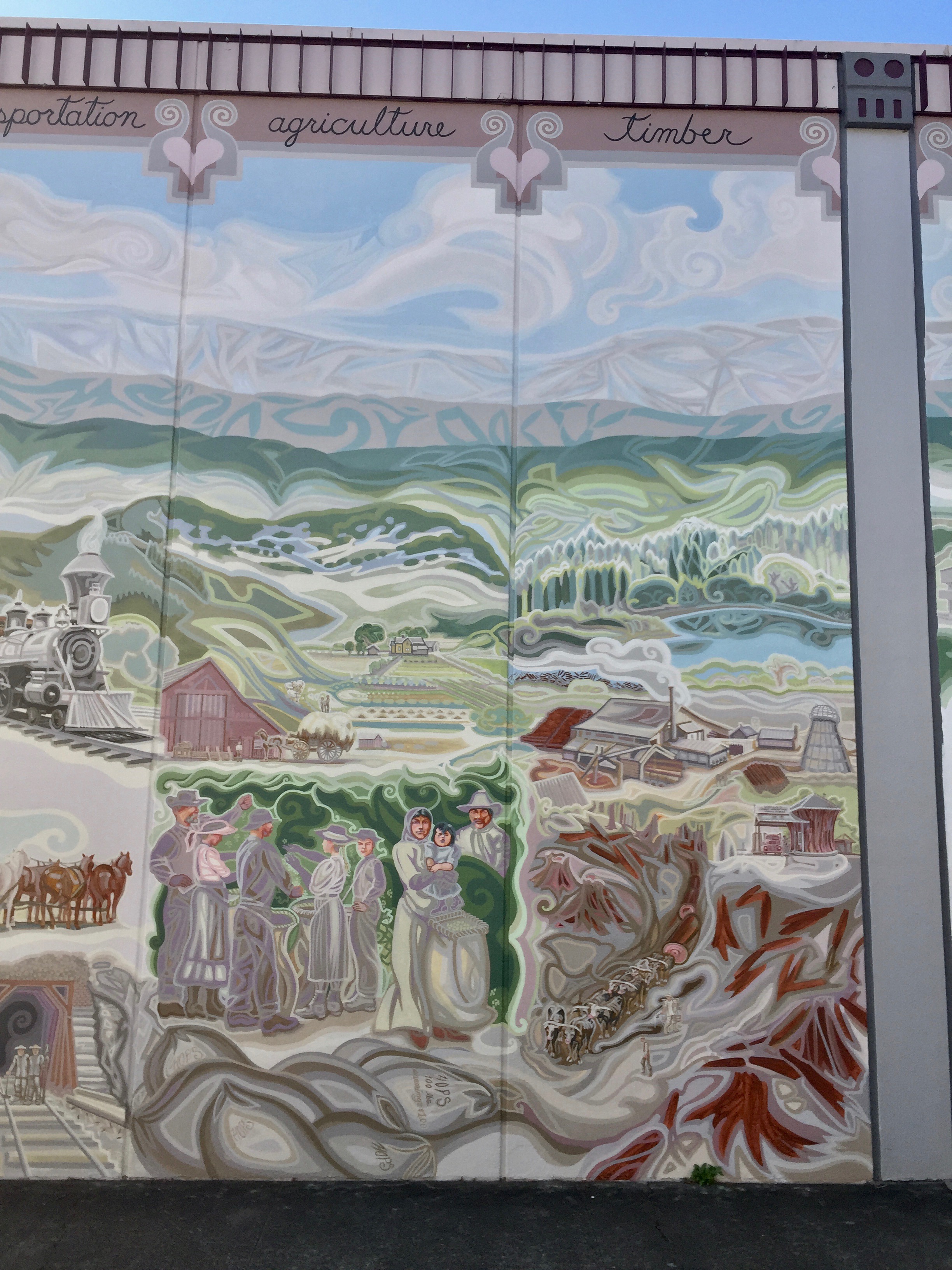
The lumber boom in Mendocino County, at its height in the 1940s, prompted major growth in Ukiah. The mill and logging scene I am showing are from earlier, around 1900. The riverfront mill features a “pond” where the logs were cleaned and awaited transport by water, and a “wigwam” or “teepee” burner for disposing of redwood sawdust, very common in every location around the county.
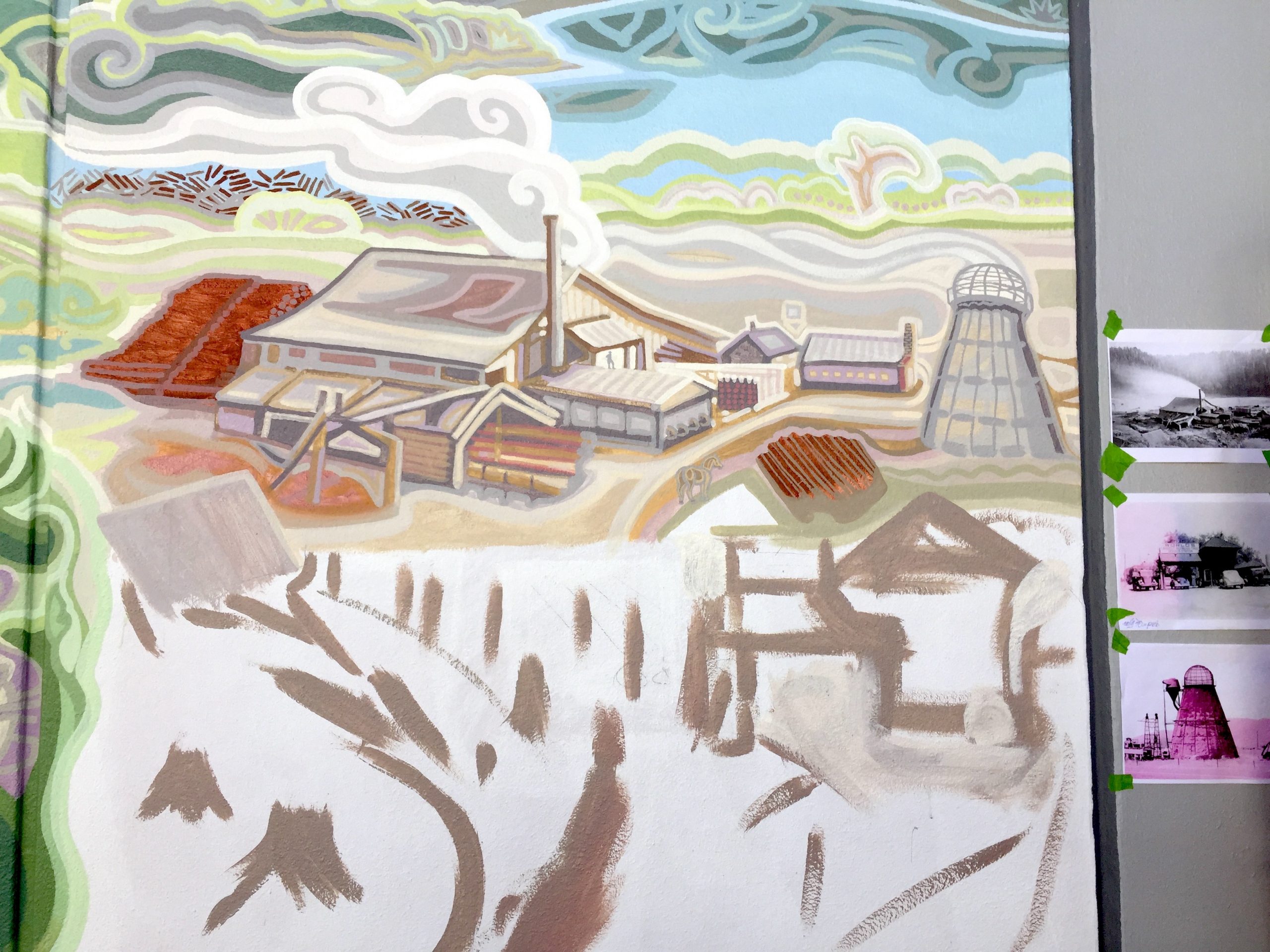
Notice my source photos on the right. Many people told me they recall the smokey pall in the air from multiple “teepee” burners eliminating the mill’s waste. Remember this when we get to manufacturing. People realized that all that redwood sawdust was valuable!
A.O. Carpenter, the father of Grace Hudson, was a brilliant photographer in Ukiah and I have drawn a lot of source material from his work. Luckily, he ventured beyond the formal photos that earned him money and took pictures of many aspects of Mendocino County life.
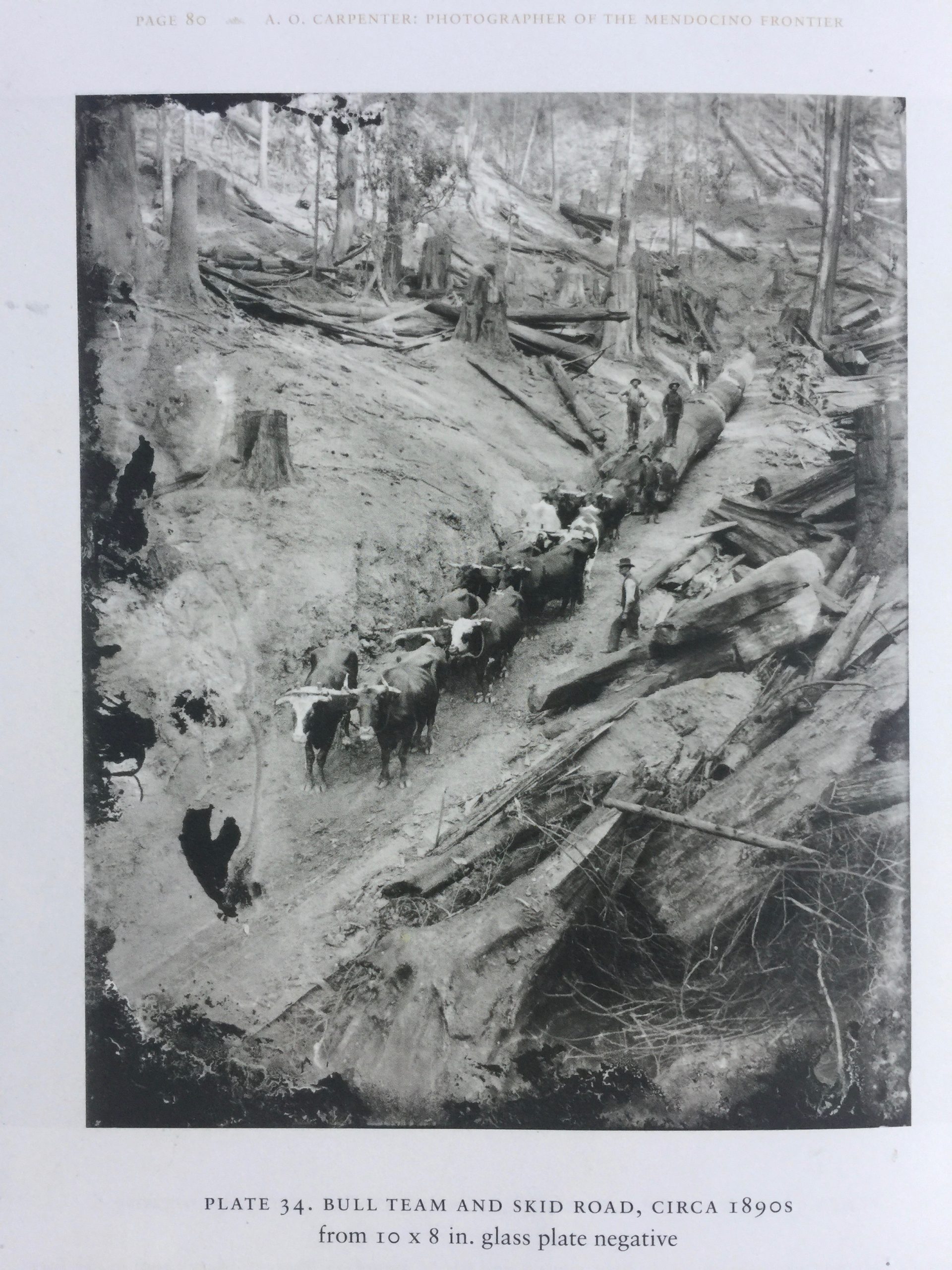
Skid roads and bull teams were one of the first methods of transporting cut logs. Initially they were used to move the logs to rivers, where they were floated to sawmills down stream. Later they led to railroad landings.
Aurelius O. Carpenter – Photographer of the Mendocino Frontier, by Marvin A. Schenck, Karen Holmes, Sherrie Smith-Ferri. Catalogue published in honor of the 20th anniversary of the Grace Hudson Museum & Sun House, 2007.

The mural scene shows this skid road where felled redwood trees were pulled down a burned hillside into the ravine. Bull teams dragged the huge logs along a track made slick by Chinese water slingers, as you see here, turning dirt into mud. Notice the remnant of orange flame at the top indicating the slash and burn method.
In Carpenter’s photo it is clear that the oxen are gaunt and perhaps overworked, which I have reproduced here.
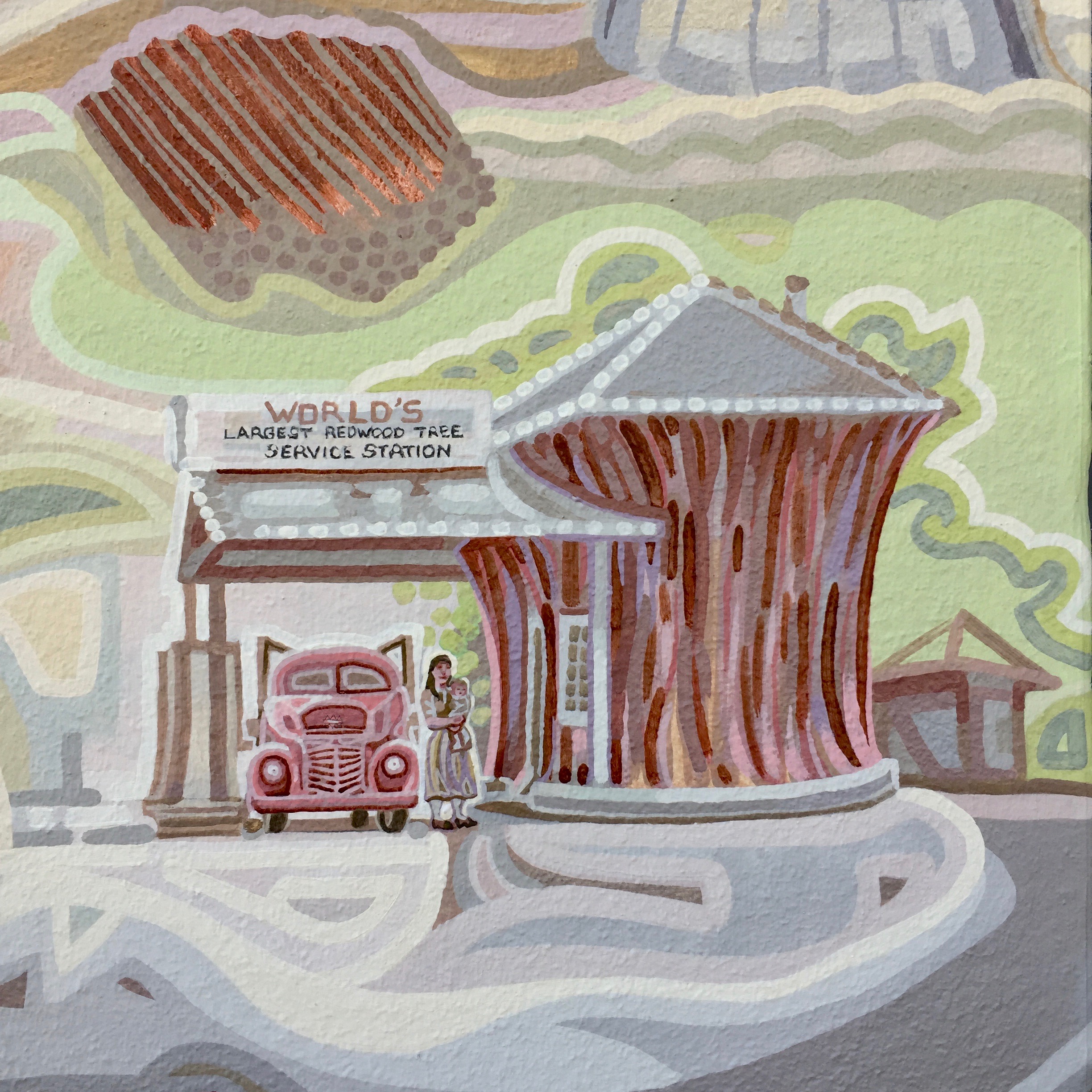
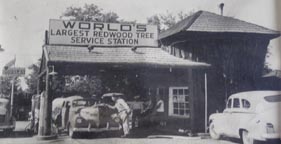
The Redwood Tree Service Station was built in 1936 from massive redwood tree over 1500 years old, that was felled 17 miles from Ukiah and brought to town in quarters.
http://rwtukiah.com/
I painted the structure from a 1940’s photograph that included a mother and child and vehicles from the period. Well, I knew just the truck to use for a vehicular portrait: the 1941 International that sat at that moment inside the Keiffer barn.

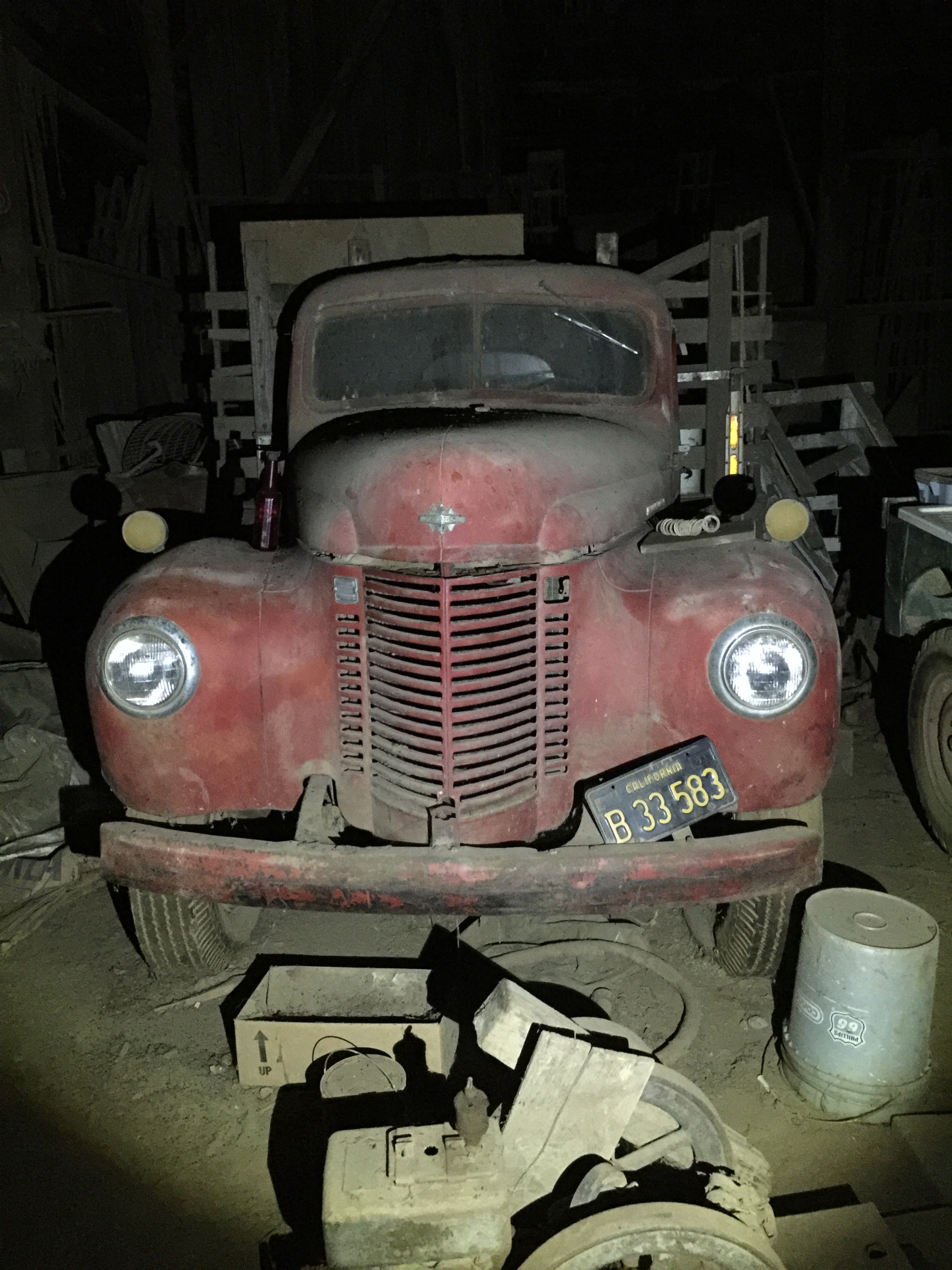
I love to bring history back to life in paint. So I also painted Dave Poma’s mom in the scene, next to the truck that she had probably ridden in. She holds a baby in her arms.
This represents the baby she was forced to give up for adoption in her younger life. Sadly, she never knew her first child, but as an adult woman, that child found her birth mother’s family and her own siblings. Far from an uncommon occurrence, many older women told me of similar experiences among their generation and that of their parents.
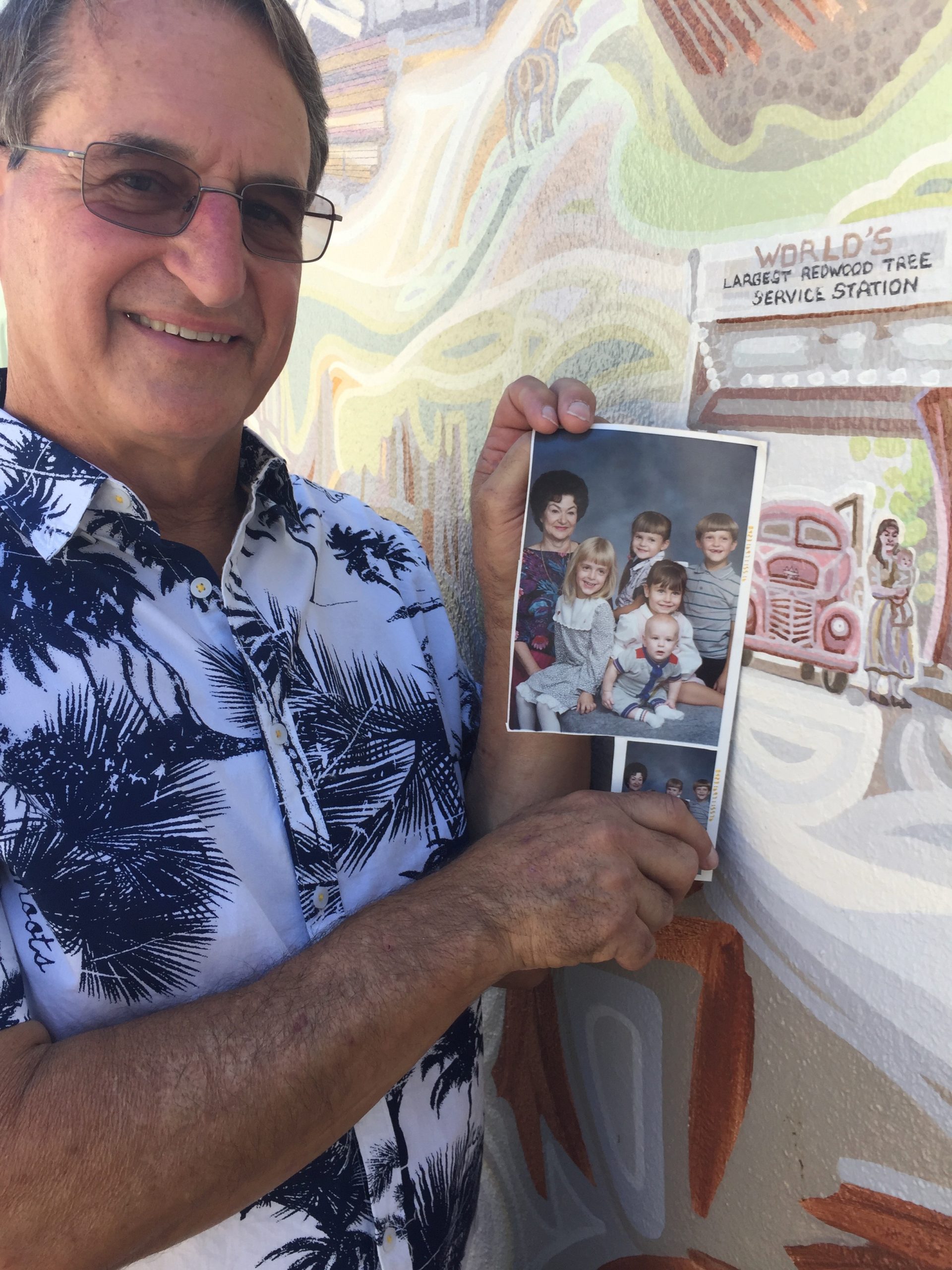

The photos show the tiny brush – made with about 30 long hairs – that I must use to paint a face so small on a surface this rough.

Next panel: